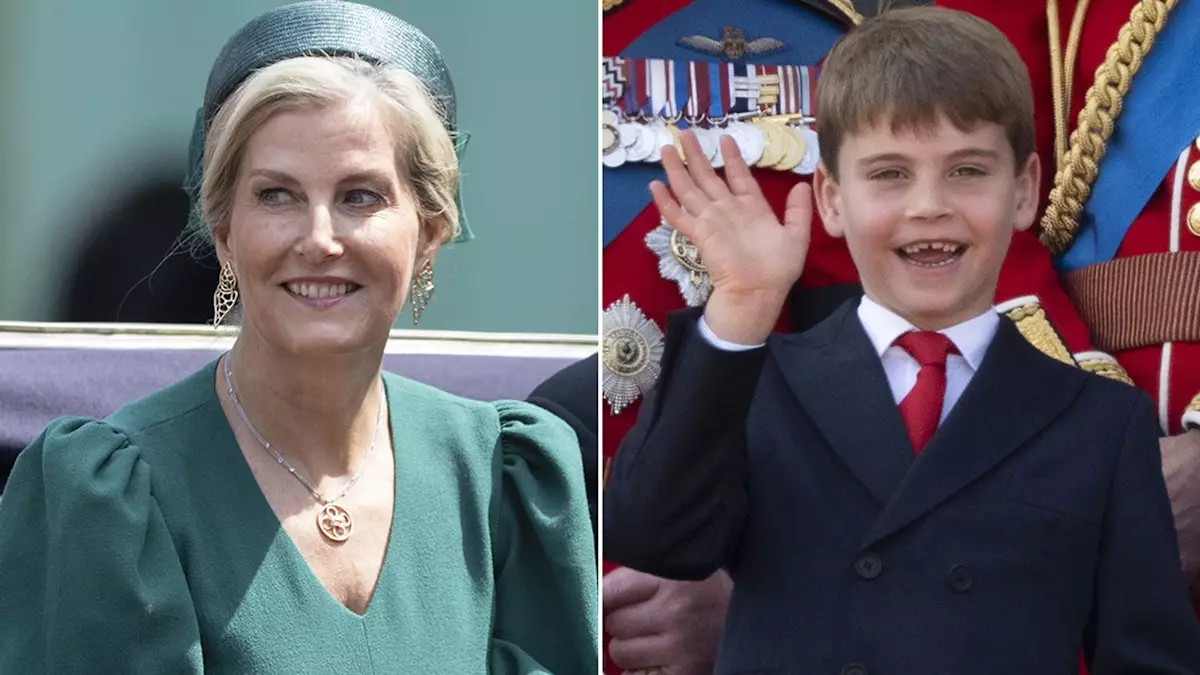This year’s Trooping the Colour brought forth a delightful glimpse into the lives of the younger royals, particularly through the antics of Prince Louis, who at the tender age of seven, has been captivating audiences with his joyful spirit and childlike wonder. The annual event, steeped in tradition and royal pomp, showcased not just ceremonial duties but also precious moments of familial connection, especially between Louis and his relatives. Whether it was mimicking his grandfather or engaging in playful banter with his elder brother, Louis demonstrated a endearing mix of mischief and innocence that captured the hearts of onlookers.
However, one of the understated highlights of the day unfolded during the service itself, where the Duchess of Edinburgh took the opportunity to entertain the young prince. Though partially hidden behind his sister, Princess Charlotte, a candid exchange between Louis and his great-aunt became a poignant reminder of the familial ties that weave through the royal tapestry. Their shared laughter and silly faces painted a picture of warmth and connectivity, despite the often impersonal atmosphere that surrounds official royal events. Observers on social media were quick to commend this close-knit relationship, noting how refreshing it is to witness such genuine interactions amid the grandiosity of royal duties.
The Absence of the Next Generation
Yet, not all was complete in the gathering of the royal family. The absence of Sophie’s children, Lady Louise Windsor and James, Earl of Wessex, was noticeably felt during this year’s celebrations. Lady Louise, usually a prominent figure at such cardinal events, was engrossed in her academic responsibilities at St Andrews University, presumably prioritizing her studies over royal engagements. Similarly, James’s continued absence, now spanning three years, reflects the pressing demands of his GCSE examinations. These young royals are navigating the delicate balance between their familial duties and the rigors of education, emphasizing a modern twist on royal life where academic commitments hold significant weight.
Their absence, however, serves to shed light on the changing notion of royalty in contemporary society. It is refreshing to witness a royal family that acknowledges the importance of education and personal development, grounding their members in responsibilities that resonate beyond ceremonial traditions.
The Growing Bond Between Families
The evolving relationship between the Edinburghs and the Wales family also came into focus during the event, accentuating a symbiotic bond that appears to grow stronger with time. The dual engagement in Cornwall, where the Duchess and Prince William joined forces for an agricultural showcase, underscored their collective commitment to public service. The duo’s playful interaction as they tasted local produce and shared laughs hinted at a deepening camaraderie that extends beyond mere duty.
Their ease with one another, punctuated by jokes about transitioning from chutneys to ‘booze,’ presents a lighter side to royal duties, allowing the public to connect with them on a personal level. The applause from onlookers during their appearance further illustrates the public’s appetite for relatable and accessible royal figures. In a world often consumed by political divide, the unity displayed by these two families, centered around charitable engagements, cultivates a sense of hope and positivity.
An Unseen Support System
Moreover, Sophie has undeniably stepped into a role that emphasizes emotional support within the royal family, particularly for the Princess of Wales during tumultuous times. The realization that she has been a pillar for Kate Middleton, notably following her cancer diagnosis, speaks volumes about the strength of their association. It is an intricate aspect of royal life that often goes unnoticed, but it highlights the importance of personal relationships amidst the public spectacle of royalty.
The dynamic between the Edinburgh family and the Wales family not only showcases the resilience of these relationships but signifies a purposeful shift away from the solitary image often attributed to royal life. In a sense, the Trooping the Colour this year was not merely a display of pageantry; it was a celebration of familial love, humor, and the ongoing evolution of royal duties that echo the sentiments of a more modern monarchy.

